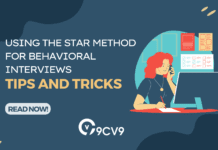As the world is shifting towards a service-dominated economy, recruiting the right people plays an even larger role to foster a company’s survival and growth.
Apart from a sound business model, employees and teams are the lifeblood of a fast-growing company.
That said, it’s fair to conclude that people are the foundation of every organization, no matter which industry or scale of operation they’re operating in.
However, recruiting and retaining the right people can be a daunting task, which is why majority organizations require a separate human resources department to delegate that task to.
Reviewing resumes and portfolios are only half of the job, there’s more to finding an ideal candidate than their skills and qualifications.
That’s because a recruiter must also review candidates’ personality, soft skills, and fit to the company culture, which is more time-consuming than ever.
With that in mind, how should you measure the success of your hiring process?
How to judge whether or not all those investments in time, money and collective effort were worth it?
That’s when hiring KPIs, or key performance indicators, come in.
Here are 8 most important hiring KPIs you need to take into consideration during your recruitment process in 2021:
- Qualified candidates per opening
- Application completion rate
- Time to hire
- Sourcing channel efficiency
- Adverse impact
- Cost per hire
- Offer acceptance rate
- First-year turnover rate
Qualified candidates per opening
It’s always great to have a lot of applicants when postings for job openings.
Because that means you’ll have a larger talent pool to choose from.
But having a high number of applicants does not equal a high number of qualified candidates.
In fact, having too many candidates that aren’t qualified for the job will do more harm than good.
That’s because it’s going to consume more of your time scanning through resumes and cover letters that are not even a right fit for the position, or the company culture.
Qualified candidates per positioning refers to a ratio of applicants who are actually qualified for the role.
It might be a subjective matter to measure. But the simplest way to measure is how many people passed the first stage of the hiring process.
The average applicants-to-interview rate is around 12%.
If your ratio is lower, it might indicate that you are not creating appropriate job listings, or that you are posting them at the wrong place.
Then, you can start thinking of ways to fix your job ads to target a better audience.
Application completion rate
It’s common to see people start a job application, and stop before submitting. There are several reasons for this phenomena, people are either busy, or they self-eliminate and decide that they’re not right for the position.
However, this becomes a problem where there’s too many people withdrawing before even completing, limiting the talent pool you can choose from.
This could indicate that your application process is either too complicated, or that your job postings are not attractive to your target audience.
To measure, you can compare the number of submitted applications against the total number of candidates who started an application.
Application completion rate is one of the most overlooked hiring KPIs in the human resources industry.
Nevertheless, this doesn’t mean that you should try to maximise the number of applicants while forsaking your qualified candidates per opening.
A low application completion rate is acceptable if you have a pool of highly qualified candidates.
Time to hire
Recruiters can determine time to hire by measuring the time an applicant enters the applicant tracking system (ATS) to the time when they receive an offer.
It’s a great, yet simple measure of your organization’s recruiting process effectiveness.
Depending on the industry, the average time to hire ranges from 14 to 63 days.
A slow time to hire leaves an empty vacancy for too long of a period, potentially harming the company’s productivity.
Taking too much time responding to applicants may also cause them to drop out mid-way, as they might already be receiving offers from your competitors as you’re still looking through their CVs and cover letters.
If your company seeks to improve its recruitment efficiency, time to hire is definitely one that you should keep an eye on.
Sourcing Channel Efficiency
This particular hiring KPI tells you where all your job candidates come from.
Different sourcing channels include university job boards, social media, online recruitment platforms like 9cv9, etc.
You can measure this hiring KPI by utilizing tools like Google Analytics.
Apart from that, you can even ask your candidates how they found your company at the end of their application form.
Furthermore, you can also explore further by knowing what kinds of job postings pique candidates’ interest.
That way, you can start altering your future recruitment strategies for better efficiencies.
You can even take it a step further by measuring source quality.
This you identify where your best candidates come from, and allocate more of your hiring resources there.
Adverse Impact
Unconscious bias during recruitment is common during the screening process. But as a recruiter, you’d want to limit it as much as possible when hiring a new team member.
One of the best ways to do that is by measuring adverse impact.
Adverse impact allows you to identify the existence of bias against protected class, this includes minority, female applicants, LGBTQ+ communities, etc.
To measure it, you can divide the applicant success rate of Group A, which is your protected class, by the applicant success of Group B, your non-protected class.
This rule states that bias exists if these protected groups are hired at a less than 80% rate compared to the demographic with the highest selection rate.
Neglecting adverse impacts results in a less inclusive and diverse hiring process, which may have a damaging impact to not only the company’s reputation, but also future employee retention.
Also read: Why You Have to Write a Company Review?
Cost per hire
Apart from being a difficult task to carry, hiring is also an investment.
According to the Society of Human Resource Management (SHRM), companies spend an average of $4,000 on hiring.
Some companies spend more, some spend less. It all depends on the industry they’re operating in and the number of vacancies they wish to fill.
To effectively examine your cost per hire, it’s best for you to compare it with industry average.
Despite having different recruitment spending, all companies share one common goal: getting the most out of their investment.
In other words, minimising recruitment costs without sacrificing the quality of your hire.
Keeping an eye on cost per hire allows you to ensure that your company is not overspending, while at the same time gives you the opportunity to plan your budget ahead, should you have a big expansion in mind.
Offer acceptance rate
When shortlisting candidates on the final round of your recruitment process, one of the biggest questions you might have is how many offers you should make.
As you give out offers, you’d hope that your best candidates will accept it.
But unfortunately, that has not always been the case.
While it’s normal to have some candidates not accepting job offers, having too many rejections could indicate a red flag.
That said, another one of the hiring KPIs that you should monitor is offer acceptance rate.
According to a 2017 study, 45% of candidates reject offers because they were unimpressed with the hiring process.
Other rejection reasons include limited benefits, lack of progression opportunities, unfitting company culture, etc.
To measure offer acceptance rate, divide the number of offers accepted by the total number of offers extended.
It’s a simple, but effective way to evaluate the effectiveness of your recruitment process from the perspective of a candidate.
First-year turnover rate
As part of the human resource department, your job does not stop after the candidate has accepted the offer.
You’ll most likely have the need of facilitating the onboarding and training process required to help new employees transition into the company culture.
As a result, one of the other hiring KPIs that you need to measure happens after the hiring process, the first-year turnover rate within the company.
To calculate this figure, you can divide the number of employees who leave after less than a year of employment with the total number of employees who left.
A high turnover rate has an adverse impact on the company’s reputation, which impacts future employment prospects.
Some reasons behind high turnover rate include a toxic company culture, unrealistic job expectations, a bad fit for the company, etc.
By keeping a close eye at your company’s turnover rate, you can identify possible areas for improvement as you’d want to retain as many of your best talents as you can within the company.
All in all, you should utilize most, if not all these hiring KPIs to examine the effectiveness of your recruiting process.
Contact us for any assistance in enhancing your company’s employability. 9cv9 has been trusted by both local and foreign businesses such as Pansonic, Pizza Hut, Bosch, Zalora, Toshiba, LINE, etc in recruiting the best talents out there.
Go get your free trial to enjoy the features in the 9cv9 Career Platform by clicking here.































![Writing A Good CV [6 Tips To Improve Your CV] 6 Tips To Improve Your CV](https://blog.9cv9.com/wp-content/uploads/2020/06/2020-06-02-2-100x70.png)


